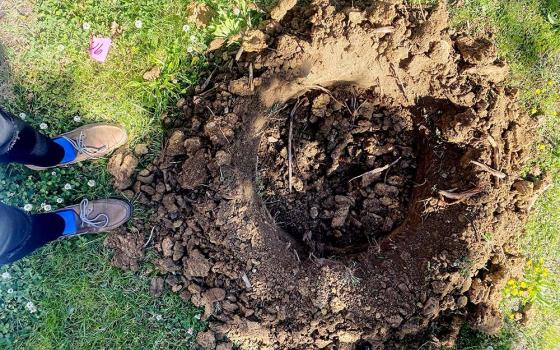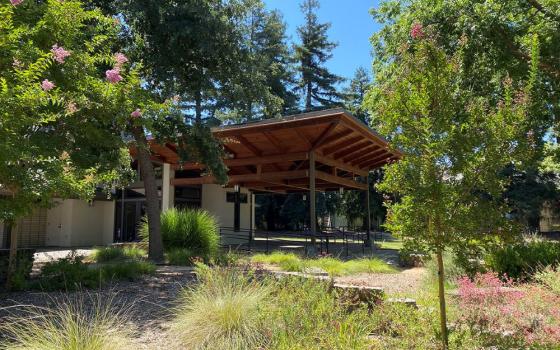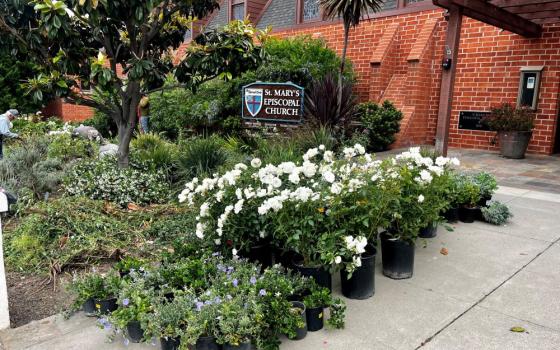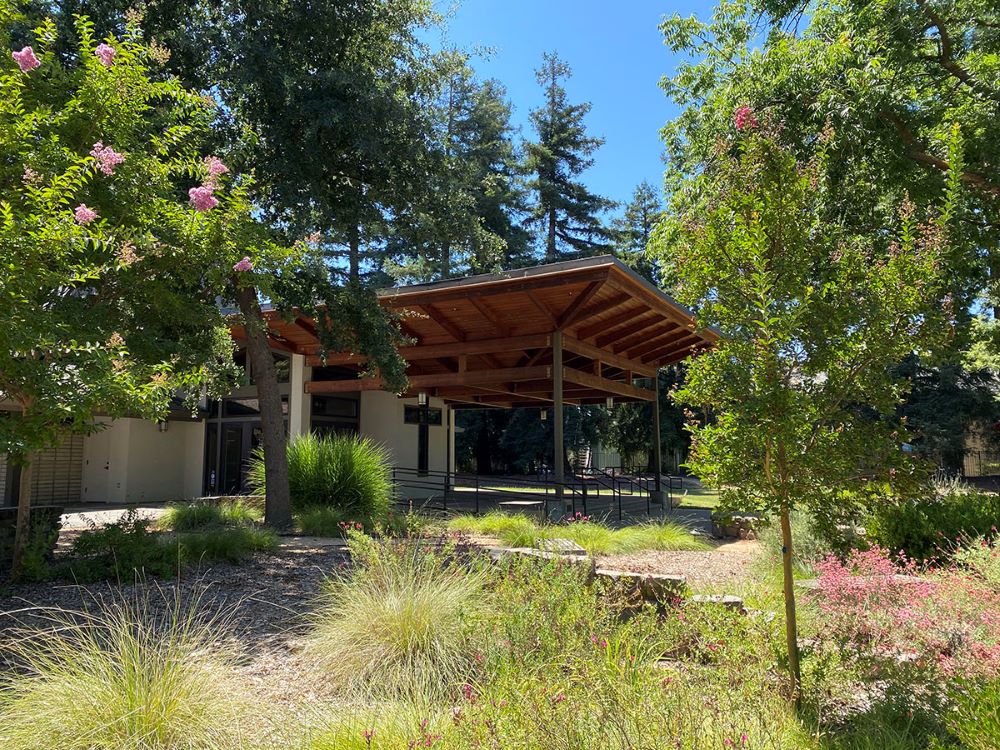
St. Martin’s Episcopal Church in Davis, California, became carbon neutral in 2021. The church has made efforts to remove grass and plant native, low-water plant species across its 2.6-acre campus. (Episcopal News Service/Lynette Wilson)
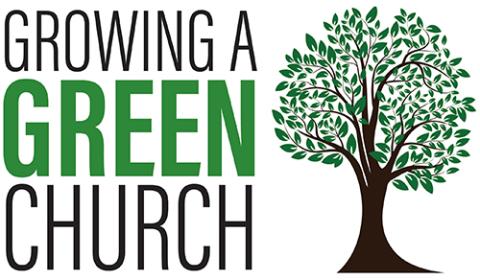
Editor's note: This story, originally published by Episcopal News Service, is part of "Growing a Green Church," an ongoing series focused on churches' efforts to steward their buildings and land effectively in the context of a changing climate. The project is produced in collaboration with The Christian Century, Episcopal News Service, Faithfully Magazine, National Catholic Reporter and Sojourners, with support from the Solutions Journalism Network and funding from the Fetzer Institute. Find more stories in the series here.
When the gas- and electric-powered HVAC unit responsible for heating the sanctuary of St. Martin's Episcopal Church in Davis, California, failed in the winter of 2016-2017, rather than prioritize comfort and rush to a fix, members layered sweaters, vests and outerwear against the cold during Sunday worship services.
"We spent a winter freezing," Janet Lane, St. Martin's Buildings and Grounds Committee chair, told Episcopal News Service.
Before the HVAC system's failure, St. Martin's already had taken steps to transition its five-building, 2.6-acre campus to renewable energy sources. In 2004, it installed its first 40-panel solar array on its office building's roof. Nine years later, a larger carport solar array was installed over the parking lot, the cost offset by a power-purchasing agreement. An effort followed in 2016 to further put the parish on the path to carbon neutral, but it failed and "left some scars in the parish," leaders say.
Advertisement
Then, when the heat went out, so did the reluctance to put an end to the parish's dependence on fossil fuels. The parish installed an all-electric heat pump system, replaced functioning gas-powered appliances with electric versions and installed a third solar array. By 2021, St. Martin's had become carbon neutral and was certified by Interfaith Power & Light as a "cool congregation."
"The demise of the old HVAC system was an action of the spirit," Lane said, and with St. Martin's carbon-neutral journey complete, Lane and others say they're available to assist others in the Diocese of Northern California and beyond.
The offer is timely. In July 2022, The Episcopal Church's General Convention committed the church to carbon neutrality in all its facilities and operations by 2030. The church's commitment is ambitious and admirable. But making it happen will depend on buy-in and activation of 6,294 congregations nationwide — the sort of changes St. Martin's has already made.
What is driving the Episcopal Church's 2030 goal?
The Earth's temperature has warmed by an average 1.1 degrees Celsius since the advent of the Industrial Revolution. The burning of fossil fuels, which emits carbon dioxide and other greenhouse gases, is largely responsible for the rise in temperature. In 2015, nations worldwide committed to reducing emissions to limit warming to 1.5 degrees above pre-industrial levels in an attempt to avert the worst effects of climate change. Instead, emissions are on pace to increase by over 10% from 2010 to 2030. Meanwhile, heat waves, droughts, hurricanes, flooding and severe rain events have increased in frequency and severity worldwide.
Climate scientists agree transitioning away from burning fossil fuels and toward renewable energy sources is key to reducing emissions. Science and the Christian call to care for creation underscore St. Martin's efforts and The Episcopal Church's carbon neutrality goal.
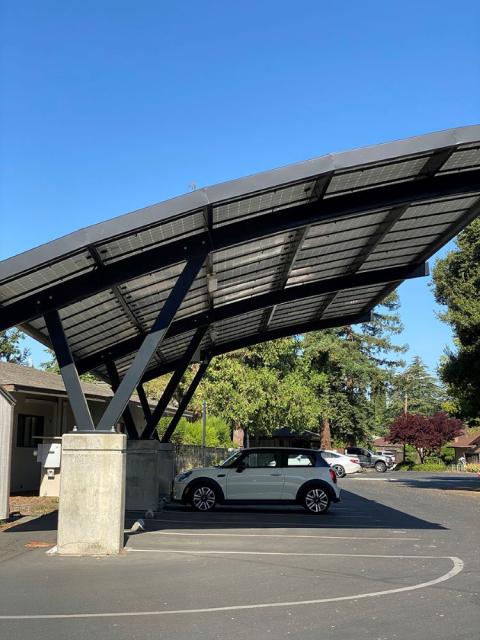
St. Martin Episcopal Church's carport solar array was installed in 2013, with the cost offset by a power-purchasing agreement. (Episcopal News Service/Lynette Wilson)
How St. Martin's got there
Located 15 miles west of Sacramento, Davis is a progressive college town of about 67,000 permanent residents and 35,000 University of California students. St. Martin's is just off campus in a leafy neighborhood. The solar carport array was one of the first things the Rev. Pamela Dolan noticed upon arrival at St. Martin's in September 2017.
"That gave me an immediate sense of where some of the church's priorities were," Dolan, the parish's rector and co-chair of the Diocese of Northern California's Commission on the Environment, told ENS.
Still, even in a small progressive city like Davis, diverting funds from mission and ministry outreach to building upgrades makes for difficult conversations.
"It's hard to say we're going to get rid of a hot water heater that has a few years of life left in it. But at some point, you have to think about being pennywise and pound foolish … If this is a priority, then we are going to have to make some sacrifices and make some choices that not everybody's 100% on board with and then hope the benefits become clear over time," Dolan said.
The process the Buildings and Grounds Committee followed when replacing the HVAC system, which happened during an interim period before Dolan's arrival, helped facilitate additional upgrades.
Some vendors, Lane said, cautioned against converting to an all-electric heat pump system, given the worship space's size, 4,469 square feet, and its 40-foot pitched ceiling.
"There were companies telling us, 'Do not go to electric, you're not going to like it,'" Lane said, particularly given the size of the sanctuary and the parish hall. "It doesn't heat up very quickly, it doesn't cool down very quickly. I remember one company telling us, 'You're just not going to like heat pumps,'" she said.
But that didn't stop them. The Buildings and Grounds Committee evaluated four options and presented a plan to the vestry, which voted to install six outdoor heat-pump units along two of the building's lengthwise exterior walls and 12 indoor "air handler units" along the interior walls, each operated by one outdoor unit on the other side. The system cost $45,000, including parts, labor and a 10-year warranty.
"The minute we did that we realized we had to do it everywhere in all our buildings," Lane said. "Now every single one of our HVAC systems is an electric heat pump. We are generating more electricity than we are using most of the time."
Rather than flip one switch, someone needs to turn on each unit and it can take a few minutes for the space to begin to heat up and cool down, but, Lane said, that's not an issue.
"I would encourage people to be willing to make small adjustments to get to something more efficient," she said. "With these different units we can sometimes turn half of them on; if we are in the front of the church practicing something and it's really hot, we can just turn the front ones on. [Heat pumps] have given us a lot of flexibility."
By 2018, St. Martin's had reduced its carbon footprint by about 60%, its annual natural gas bill by 50% and grid electricity bills by 75%, with overall energy costs reduced by nearly 20%.
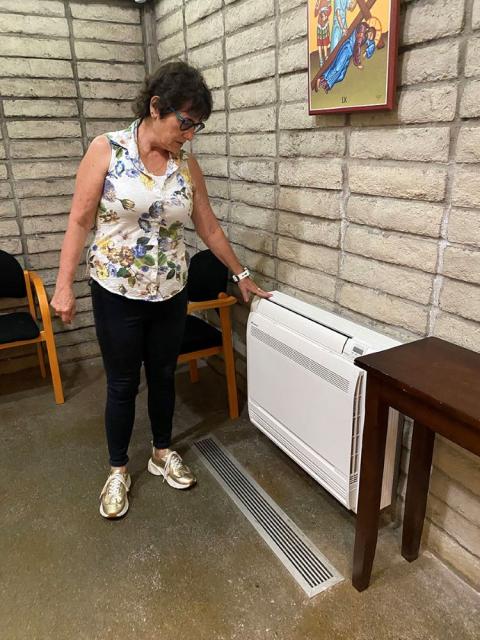
Janet Lane, chair of the St. Martin's Buildings and Grounds Committee, said the committee asked for members' feedback on the 12 air handler units before installing them in the worships space, a move that helped build consensus. (Episcopal News Service/Lynette Wilson)
"We're still heating and cooling to the same extent, but more selective. The whole idea of net zero is to produce what you consume. To get to net-zero carbon, means no greenhouse gas emissions … you have to stop using gas," said Gerry Braun, founder of the Integrated Renewable Energy Systems Network and a former member of St. Martin's. "Solar plus efficiency plus conservation, a combination of the three, I think, is a good story from a climate perspective."
The church's solar panels connect to Pacific Gas & Electric's grid, which supplies electricity via renewables including the sun, wind and water. With the switch to an all-electric HVAC system and the 2021 installation of the last solar array on the roof of the Sunday school classroom building, St. Martin's achieved net-zero carbon.
Bottom line, Lane added: "It's not about getting the Cool Congregations award, it's about the impact our energy consumption has on other people around the world."
A diocese begins to follow suit
Building on General Convention's action, the Diocese of Northern California passed its own resolution in the fall of 2022 asking each congregation and diocesan-affiliated organization to come up with a plan by Dec. 31, 2024, to achieve carbon neutrality in line with the denomination's six-year timeline.
The diocese has 63 churches in 26 counties, from the Pacific Coast to the Sierra Nevada and from the northern edge of the San Francisco Bay to the Oregon state line. The first step in the process requires each congregation and organizational affiliate to undergo an energy assessment.
Transitioning to renewables is not a one-size-fits-all prescription.
"One of the things that the submitters of this resolution named was that there are many steps to getting [to carbon neutral], and some of them are fairly easy and some are bigger," Northern California Bishop Megan Traquair told ENS.
Realistically, she said, not everyone will make it there by 2030, but what impressed her was the show of commitment to work together.
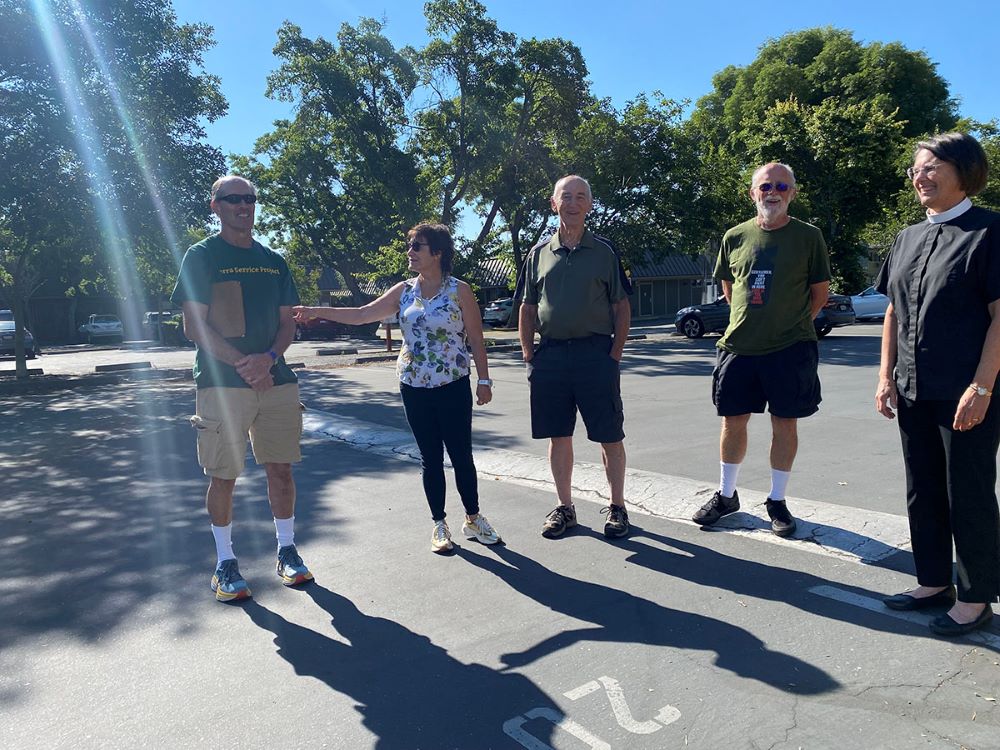
Tim Williams, Janet Lane, Gerry Braun, all current or former members of St. Martin's Buildings and Grounds Committee, Neil Willits, co-senior warden, and the Rev. Debbie Hawkins, an associate priest, gather at the church to discuss its journey to carbon neutral. (Episcopal News Service/Lynette Wilson)
"When our smaller parishes said on the floor [of convention], 'This is a great idea, but we don't have the bandwidth. We are happy to get on board, be we don't see how we could manage it,' there was a clear expression of solidarity from both proposers and other proponents that we will work to figure this out together, helping those who don't have a lot of members figure out the steps along the way," Traquair said.
What's most important to Miriam Casey, who along with Dolan co-chairs the diocese's Commission on the Environment, was that the diocese's 63 congregations were invited into the process.
"Nobody's obligated to do anything. It's all by invitation. I think that was really an important strategy," Casey said. "I can't tell you today that I have 63 churches on board, and I think that's unrealistic to begin with, but I can tell you when there's a real person [offering help] it makes a difference."
The first step is to conduct an energy assessment, including measuring each parish's carbon footprint, and the second step is to write a plan to reduce that footprint. Not everything, she said, is about adding solar, as was evident in St. Martin's almost 20-year journey. More immediate fixes like switching to LED lights and keeping the thermostat to 68 degrees Fahrenheit and heating and cooling only the rooms in use can save energy and money in the short term.
Lane recommends churches like St. Martin's take a gradual approach.
"A gradual approach worked really well for us because we're not a church with a lot of money. We don't have any big endowments," she said.
After evaluating bids ranging from $2,500 to $12,000, the diocese has contracted with Energy for Purpose, whose business model is to help faith communities transition to renewable energy sources and direct money back into mission and ministry. Nearly all its clients are churches.
"[There are] 400,000 churches or houses of worship in the U.S. We spent $10 billion on energy and facilities, 30% of that is wasted. So, we could recapture $3 billion at no cost. And the environmental impact behind that is huge," Energy for Purpose's founder, Colby May, told ENS.
The energy assessment includes things like learning how to read utility bills, usage data and understanding how the facility uses energy to inform decisions, May said.
The first round of energy assessments began in early July with the second round scheduled for later this summer. The board of trustees committed $25,000 to fund the first round of energy assessments, and the diocese has received a $25,000 Creation Care grant from The Episcopal Church to fund the second round.



